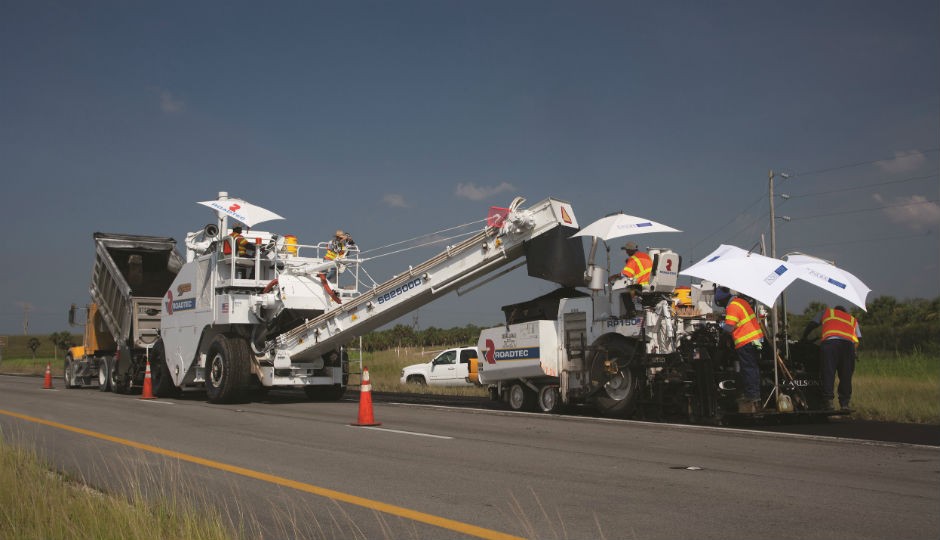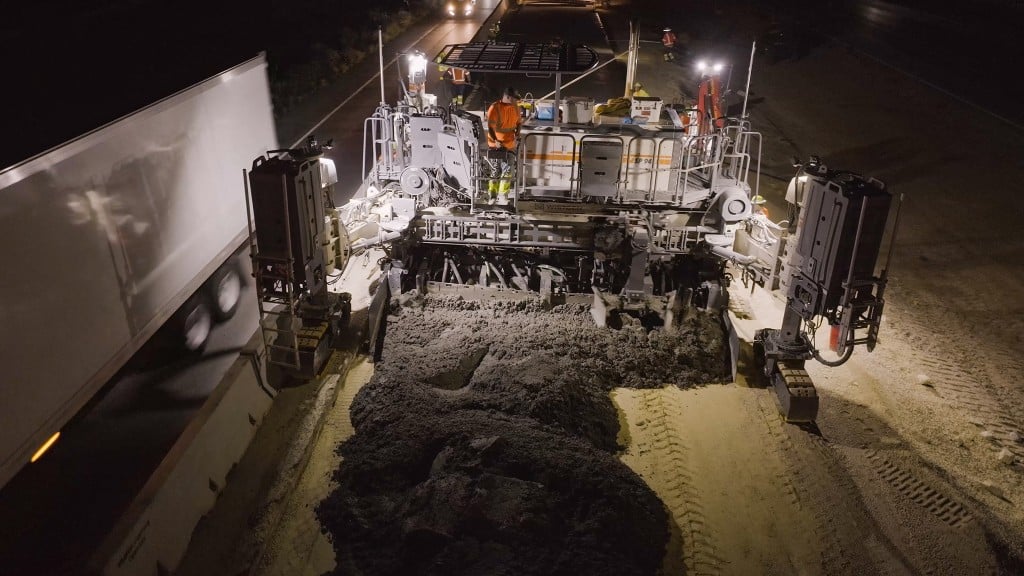Threats to pavement quality ... and a solution
Dealing with temperature differentials and aggregate segregation

The big challenge asphalt contractors face today is how to improve the quality performance of asphalt paving through production, laydown and preservation.
There are two big threats to quality results: temperature differentials and aggregate segregation. Both problems yield the same damaging results: excessive air voids, aka inadequate density.
Hot mix asphalt (HMA) temperature differentials occur when cooler HMA is placed during the job. This cooler material is usually caused by transporting the material to the paver with the outside and top of the load cooling faster than the inside. On large mat jobs, the cooler areas will compact at a slower rate and reach cessation temperature more quickly than the surrounding mat. What can result are issues with inadequate compaction in these isolated areas, which then can cause decreased strength, reduced fatigue life, accelerated aging/decreased durability, rutting, ravelling and moisture damage. Generally, temperature differentials greater than about 14 degrees C will cause compaction problems.
Segregation is a term often used in paving to describe a number of things. An accepted definition comes from a 2000 research report written by M. Stroup-Gardiner and E.R. Brown, “National Cooperative Highway Research Program Report 441: Segregation in Hot Mix Asphalt Pavements”: Segregation is a lack of homogeneity in the hot mix asphalt constituents of the in-place mat of such a magnitude that there is a reasonable expectation of accelerated pavement distress(es).
They point out that constituents refers to asphalt binder, aggregates and air voids. In essence, segregation negatively affects the HMA performance and pavement life. The chief problems are: reduced fatigue life, rutting, ravelling and moisture damage.
Smoothness is the ultimate goal of the paving contractor. The finished paved mat smoothness is what contractors are evaluated on and how success is measured. Smoothness matters. The contractor can win bonuses or be fined based on the finished surface’s smoothness measure on the International Roughness Index (IRI).
Minimizing the need for paving starts and stops is a major objective in planning for smoothness. Halting the paving operation can disrupt the uniformity of the pavement’s surface and compromise the smoothness of the mat. The main reason for unplanned stops in paving operations is when material is not available when needed.
Material transfer vehicle
Fortunately, asphalt-paving contractors today have access to better tools for ensuring quality results and control throughout the paving project. One such tool is the material transfer vehicle (MTV).
MTVs are used to assist the paver in accepting a regular supply of HMA. Most pavers can receive HMA directly from end-dump or live-bottom trucks; however, in most situations it can be better to use an MTV. Paving machines using bottom dump trucks and windrows require a windrow elevator MTV, while other MTVs are used to provide additional surge volume, which is beneficial because it allows the paver to operate continuously without stopping, minimizes truck waiting time at the paving site and may minimize aggregate segregation and temperature differentials.
Typically, windrow elevators are positioned directly in front of pavers. They are designed to pick up the HMA windrow and transfer it to the paver hopper, with the goal of virtually continuous paving and increased production. When using windrows and windrow elevators, the windrow laydown rate must match the paver laydown rate. If the amount of material in the windrow is too little or too much, the paver may become overloaded or may run dry and have to stop. It’s these stops that result in pavement deficiencies.
Surge volume/remixing MTVs are often used in tandem with a paver hopper insert that increases the capacity of the paver hopper. The insert is removable and sometimes contains remixing apparatus (such as a pugmill) near the bottom. These vehicles offer several unique advantages to the process of constructing asphalt pavements. They can minimize issues associated with trucking, as well as material and thermal segregation.
Roadtec offers a patented, uniform remixing auger. The anti-segregation auger employs three different pitches that get progressively bigger towards the centre of the MTV. This triple-pitch flighting allows for additional material to enter the auger area each time the pitch is increased, resulting in thorough remixing.
Additionally, the Roadtec MTV-1000 Material Transfer Vehicle offers another patented innovation: an offset, gravity transfer which is designed to provide reblending of asphalt materials just before they are delivered to the paver, which is engineered to eliminate truck-end segregation and allow for continuous in-line paving. The Roadtec MTVs also have optional windrow attachments that can pick up material from the windrow and deliver it to the paver, properly mixed and at the right temperature, through its process.
Roadtec says that they developed the concept of material transfer vehicles in 1989. They currently offer three asphalt remixing devices, representing three different sizes: the SB-2500e/ex Shuttle Buggy MTV, the SB-1500 Shuttle Buggy MTV, and the MTV-1000 Material Transfer Vehicle. The SB-2500e/ex features a 25-ton surge capacity and weighs 78,000 pounds. The SB-1500 can store up to 15 tons of asphalt mix and weighs 62,500 pounds. And the smaller MTV-1000 weighs 50,000 pounds and can handle up to 10 tons of asphalt mix.
The Roadtec SB-2500e/ex has recently received upgrades which include: the addition of bindicators, devices which show the paving crew exactly how much mix remains in the hopper; a Tier 4 diesel engine for North America; enhanced conveyor wear resistance, which is intended to lower operating costs; an adjustable-width, front hopper to make it compatible with truck widths commonly used in countries outside the U.S.; and the machine’s dual operator stations which can now slide sideways past the outer edge of the main frame to improve visibility.
In the 1980s, pavement failure studies showed material segregation was a significant factor. As a result, Roadtec’s R&D staff looked at HMA at job sites using an infrared camera and saw dramatic temperature differential in the mix, even when haul distances were short. The research showed that non-uniform compaction, ravelling and stripping could be directly traced back to the temperature differential. There are two technical papers researched and written by Roadtec technical staff entitled “Segregation: Causes and Cures” and “Temperature Segregation/Temperature Differential Damage” (available as downloads on the Roadtec website as part of the product information on the SB- 2500e/ex Shuttle Buggy MTV).



